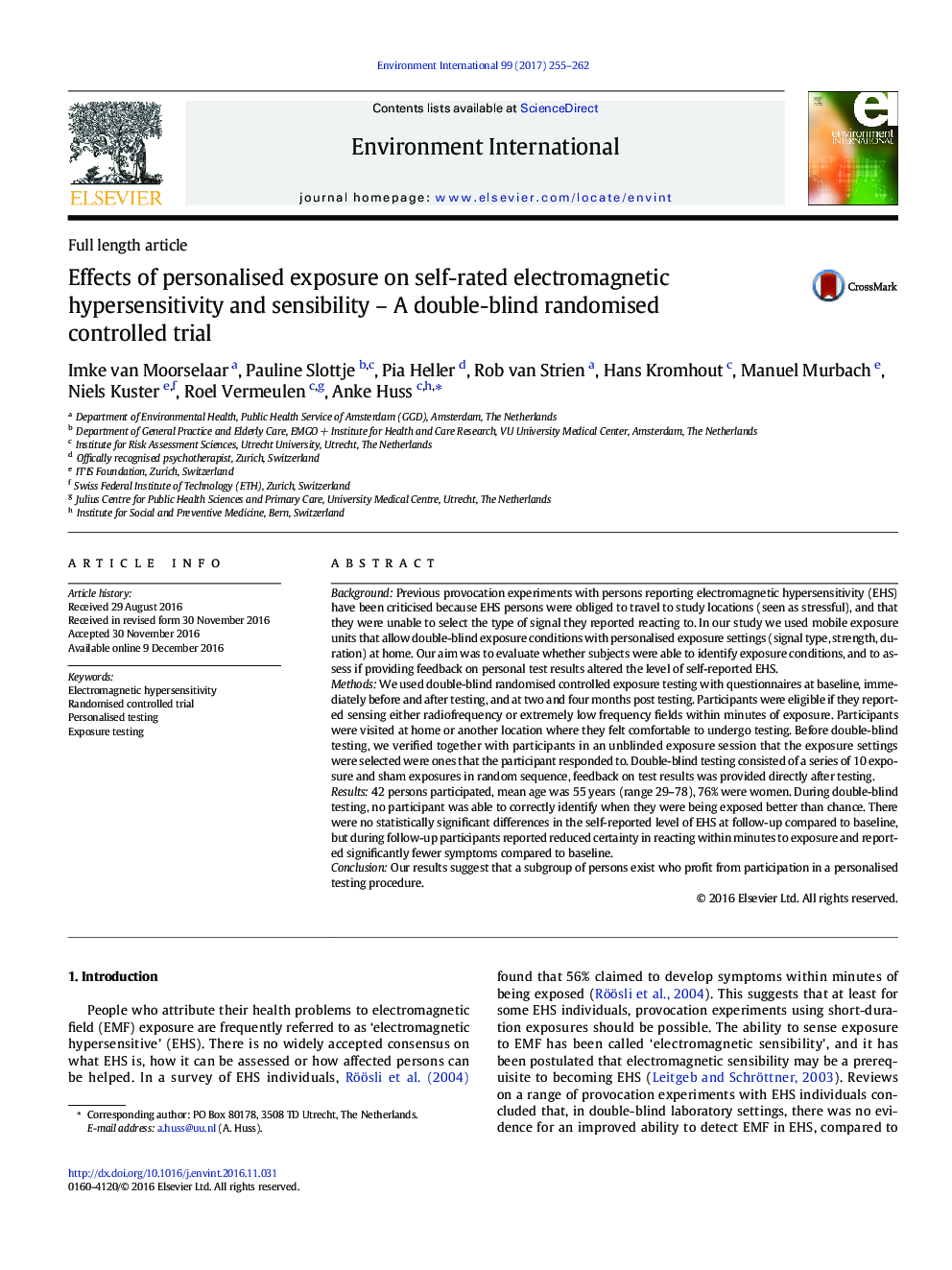| کد مقاله | کد نشریه | سال انتشار | مقاله انگلیسی | نسخه تمام متن |
|---|---|---|---|---|
| 5748417 | 1619031 | 2017 | 8 صفحه PDF | دانلود رایگان |

- We tested EHS persons claiming to react to EMF exposure within minutes.
- We verified selecting a relevant test signal in an unblinded exposure session.
- Double blind testing showed they were not able to detect exposure better than chance.
- Self-rated electromagnetic hypersensitivity was not changed after the experiment.
- Participants reported significantly fewer symptoms at 2 and 4Â months of follow-up.
BackgroundPrevious provocation experiments with persons reporting electromagnetic hypersensitivity (EHS) have been criticised because EHS persons were obliged to travel to study locations (seen as stressful), and that they were unable to select the type of signal they reported reacting to. In our study we used mobile exposure units that allow double-blind exposure conditions with personalised exposure settings (signal type, strength, duration) at home. Our aim was to evaluate whether subjects were able to identify exposure conditions, and to assess if providing feedback on personal test results altered the level of self-reported EHS.MethodsWe used double-blind randomised controlled exposure testing with questionnaires at baseline, immediately before and after testing, and at two and four months post testing. Participants were eligible if they reported sensing either radiofrequency or extremely low frequency fields within minutes of exposure. Participants were visited at home or another location where they felt comfortable to undergo testing. Before double-blind testing, we verified together with participants in an unblinded exposure session that the exposure settings were selected were ones that the participant responded to. Double-blind testing consisted of a series of 10 exposure and sham exposures in random sequence, feedback on test results was provided directly after testing.Results42 persons participated, mean age was 55Â years (range 29-78), 76% were women. During double-blind testing, no participant was able to correctly identify when they were being exposed better than chance. There were no statistically significant differences in the self-reported level of EHS at follow-up compared to baseline, but during follow-up participants reported reduced certainty in reacting within minutes to exposure and reported significantly fewer symptoms compared to baseline.ConclusionOur results suggest that a subgroup of persons exist who profit from participation in a personalised testing procedure.
Journal: Environment International - Volume 99, February 2017, Pages 255-262